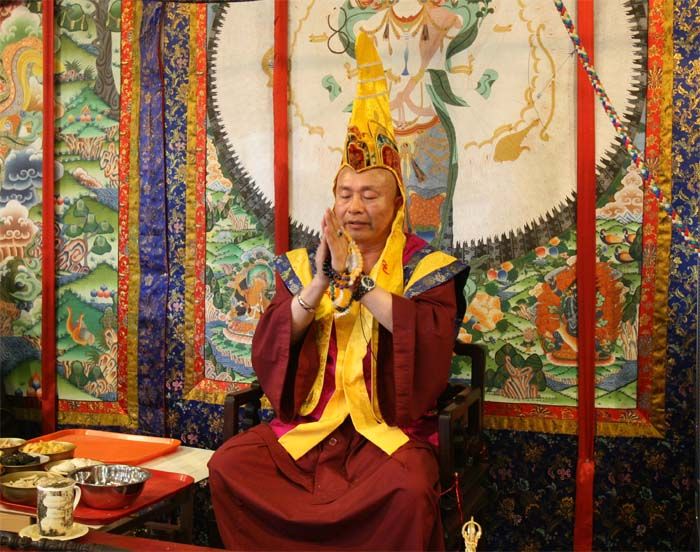Means of Salvation
1. The Natural PathAlthough a strong foundation has been laid in previous lives, he still sets good example by carrying out the necessary practices in logical steps so that his disciples can emulate. Like Buddha Shakyamuni who descended onto this world previously, he uses the natural method, going through the hardship of ordination, practice and realisation.
2. The Path of Compassion
In a series of books on the truth, he sincerely and incessantly repeats the truth, just like a caring mother appearing in the form of a Bodhisattva, personally preaching and explaining until his disciples attain enlightenment; the path is not dissimilar to the Mahayana school way of liberation.
3. The Path of Vajrayana
He never discards those stubborn and difficult ones. He will appear to be in great wrath just to salvage them. They may be fierce and brutal; if necessary he will be even more so. This kind of dharma designed to liberate the sentient being is called the Path of Vajrayana method.
The Importance of Taking Refuge and Empowerment
1. There are many people who advocate that as long as we uphold good thought, believe in Buddhism, chant the mantra and do postration to the Buddhas, it is not necessary to take refuge with a guru .What they do not realise is that the dharma is only a visible external form of practice. To really practise Buddhism, one must practise the internal form as well. It is a kind of long term training; and must be under the guidance of a guru. Only a true guru has the experience of unification of the mind and the universe. This kind of experience can never be described in full by words; and only those who have taken refuge can receive the `mental dharmaand learn to experience it likewise.2. To the Esoteric school of Tantric Buddhism, empowerment has great merits. After receiving the empowerment, a lay person can be uplifted to be a child of the Buddha. His or her body, speech and mind will be like that of the Buddha. Although he or she is not a de facto Buddha yet, theoritically they are; at least they can be considered for becoming latent Buddhas.
3. Taking refuge is just like getting registered. After which, the guru can then impart the dharma to you. In Esoteric school of Tantric Buddhism, lineage is highly valued. So are the guru`s lineage and energised power. Without these, there will be no spiritual response. It is even laid down as a rule that without taking refuge in the guru, one should not practise the Esoteric dharma, for the practice will be useless. The practitioner will be considered a dharma thief, as they will have broken the Samaya commandments (sacred committment) one of the most serious offences. A disciple must have full faith and trust in the guru by taking refuge, in order to achieve direct lineage and empowerment, to achieve a positive spiritual response. Only when refuge has been taken, will they be considered to be a True Buddha School disciple, both by the school itself, and by the Buddhas and Boddhisattvas. After taking refuge, one will be considered to be a son or daughter of the Buddhas and Boddhisattvas, and will be looked after by them accordingly.
4. After taking refuge, a disciple of True Buddha School must not follow any other guru other than Living Buddha Lian Shen - unless they have left the School altogether. The reason is simple. To follow any other guru one will lose the lineage and the trust between the student and the master - which will result in an unsuccessful empowerment and guidance for the student. Although Living Buddha Lian Shen advocates that one can leave True Buddha School if they do not find the School suitable to their requirements, he states that as long as one remains a student, and is a disciple of his, one must, and should not, follow any other guru during the time he is one`s master. Otherwise, it will be breaking another Samaya commandment another serious offence.



No comments:
Post a Comment